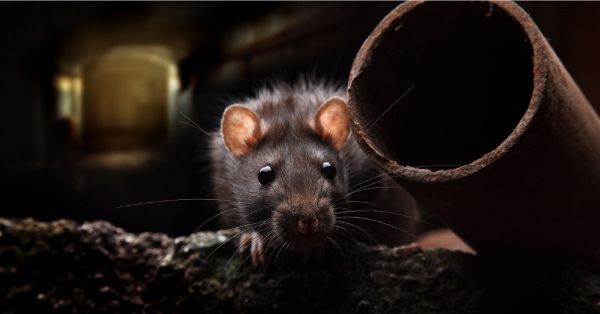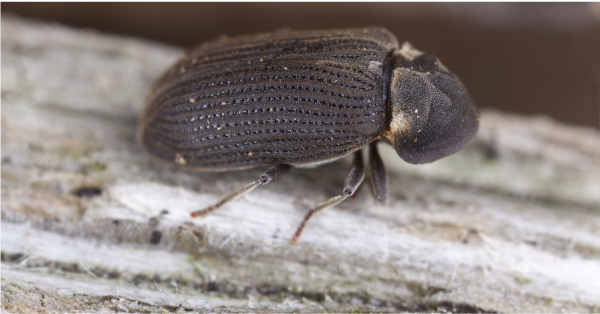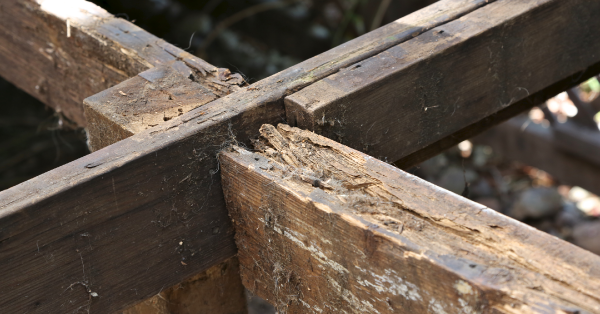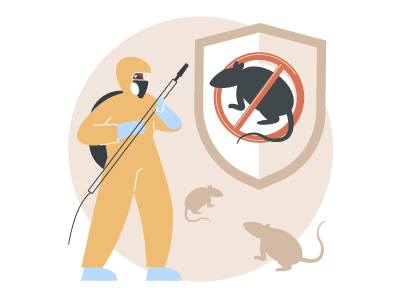Signs of Pest Infestation
- If you're purchasing a property already infested by pests, you might be able to negotiate with the seller on the price.
- Top Tip: Take advantage of our experienced RICS surveyors who are trained to notice evidence of various forms of infestation.
- Regular maintenance, good house hygiene, and taking action quickly will keep your home pest-free.
Dealing with a pest infestation can be a nightmare for homeowners. Nobody wants to live in a property with unwanted guests already settled in. Whether you're looking to buy, sell, or simply maintain your home, understanding the signs of an infestation is crucial. Let’s dive into the nitty-gritty of identifying pest infestations in your UK home and how to deal with them.
Infestation definition
Firstly, what exactly is an infestation? It's when pests – insects, rodents, or plants – invade your home in large numbers, causing damage, spreading diseases, or simply becoming a nuisance. It's not just a stray mouse or a few ants, we're talking about a full-blown takeover that can affect your health, your property, and your peace of mind.

If you're buying a home invaded by pests, you'll require the advice of a specialist on corrective action and you may be able to negotiate with the seller to account for these extra costs.
A RICS surveyor is trained in noticing evidence of various forms of infestation - this is another excellent reason to book a home buyers survey.
Types of infestation
Rats and mice
These little critters can squeeze through tiny gaps, chew through wires, and leave a trail of droppings. They reproduce quickly, so a couple of mice can turn into a full-blown infestation in no time.
They could even attack your timber, pipes, and brickwork whilst devouring your food cupboard supplies. Rats in particular could cause disease, with Weil's disease being fatal in some cases.
Signs to look out for: burrowing entrances, droppings, and gnaw marks.
Don't delay, book your home survey
Our RICS home surveyors are trained to spot infestation and pest evidence so you can avoid the risk of buying an infested property.
Wet and dry rot
Fungi that thrive in damp conditions can cause serious structural damage to your property. Wet rot needs a higher moisture level, while dry rot can spread through dry timber, causing it to crumble. The spores can be carried through in the air, so you might be breathing them in without even knowing it.
Signs to look out for: white fungus and white strands on timber and masonry. Dry rot gives out a distinct odour, but wet rot won't spread as much as dry.
Woodworm (Beetles)
Wood-boring beetles lay eggs in timber. The larvae then munch through the wood, potentially weakening beams, joists, and furniture. There are various types of these, including the common furniture beetle, house longhorn, death watch, and the wood-boring weevil.
Signs to look out for: jagged markings from tunnels, and dust from the boring (called frass).

Termites
Though not as common in the UK as in warmer climates, termites can still be a threat. They devour wood from the inside out, making them hard to detect until significant damage is done. They are most notably present in Devon, where they have been known to destroy a house in 2-3 years if left unchecked.
Signs to look out for: flight holes, the appearance of white ant workers, noise caused by eating, and odour.
Japanese knotweed
This invasive plant isn’t an insect or animal, but it’s a nightmare nonetheless. It grows rapidly and can cause severe damage to building foundations, drains, and roads.
It can grow up to 20cm per day and grows through tarmac and concrete; spreading quickly through its rhizomes (underground food storage vessel) and roots can extend to a depth of 3m.
Signs to look out for: red/purple shoots in Spring, creamy-white flowers in late Summer.
In our recent survey, 16% of homeowners found defects; including 2% who were able to pull out of a bad purchase, 7% who were able to negotiate a better price, and sadly, 7% of homeowners who did not get a survey and discovered defects after the purchase.
12 of the 39 who remembered how much these defects cost to remedy spent over £5,000
Don't burn your money, book a survey.

What are the signs of pest infestation?
How do you know if you’ve got an infestation on your hands? Look out for these tell-tale signs:
Droppings
Rats, mice, and insects leave droppings. If you see small, dark pellets in your cupboards, attic, or basement, it’s time to investigate further.
Chew marks and holes
Rodents chew on anything – wires, wood, plastic. Check for gnaw marks and small holes in your walls, floors, and furniture.
Structural damage
Rot can cause wood to feel soft and spongy. If you notice crumbling timber or sagging floors, you might be dealing with rot or woodworm.
Unusual noises
Scurrying, scratching, or gnawing sounds, especially at night, can indicate rodents. Termites and wood-boring beetles can sometimes be heard munching away.

Nests
Rodents build nests using shredded paper, fabric, and other soft materials. Check hidden corners, attics, and behind appliances.
Discarded wings and shed skins
Insects like termites shed their wings after swarming, and you might find these near windows or in basements. Skin that's been shed from various other insects can also indicate their presence.
Plants and soil displacement
For Japanese Knotweed, look for dense clusters of canes with heart-shaped leaves. It can break through concrete and tarmac, so check for any unusual plant growth near foundations or driveways.
Causes of infestations - housing health
Cleanliness
Pests are attracted to food scraps, dirty dishes, and unclean environments. Regular cleaning can keep many pests at bay.
Structural/design problems
Cracks in walls, gaps around windows and doors, and poor ventilation can provide easy access and ideal conditions for pests.
Waste and rubbish or food sources
Overflowing bins, uncollected rubbish, and cluttered areas can become breeding grounds for pests.
Pests are always on the lookout for food. Pet food left out overnight, unsealed pantry items, and crumbs can invite unwanted guests.
Risks to health
Infestations aren’t just annoying; they can pose serious health risks. Rodents and insects can spread diseases, contaminate food, and trigger allergies. Japanese Knotweed can damage property to the extent that it affects its value and insurability.

Contacting your local authority for infestation pest control
Got an infestation that’s out of control? Your local authority can help. Most local authorities have a pest control service or can recommend reputable companies to handle the problem.
If you're a tenant renting, your landlord may be responsible for addressing infestations, particularly if they are caused by structural issues or originate from a neighbouring property. If the latter is true, a statutory nuisance complaint might need to be raised to the local council.
It is always best practice to check your tenancy agreement which will determine who is responsible for what in the event of an infestation or repair work due to an infestation or parasites etc.
Additionally, the government has a housing health and safety rating system with guidance available for non-specialists.
Don’t wait until you’re sharing your morning coffee with a rat. Identifying the signs early and taking swift action can save you a lot of hassle and money. Regular maintenance, good hygiene, and prompt attention to potential problems can keep your home pest-free and your peace of mind intact. If in doubt, call in the experts – it’s always better to be safe than sorry!
Do you have an infestation?
If you have an infestation problem in your own property, you should seek an infestation survey from a pest control specialist who can suggest your options for treatment and provide quotes for the work. It is advisable to resolve the problem before marketing the property, or be prepared it will deter potential buyers and decrease the potential sale value.
One exception to this rule may be if the property is in such disrepair that it will likely be knocked down and rebuilt, in which case the value will be based on its development potential and may be unaffected by infestations inside the house. However, where deep rooting plants are established in the soil, this will still require extensive treatment before redevelopment can take place and will therefore impact the sale price.
Andrew started his career in 2000 working within conveyancing solicitor firms and grew hands-on knowledge of a wide variety of conveyancing challenges and solutions. After helping in excess of 50,000 clients in his career, he uses all this experience within his article writing for SAM, mainstream media and his self published book How to Buy a House Without Killing Anyone.
Caragh is an excellent writer and copy editor of books, news articles and editorials. She has written extensively for SAM for a variety of conveyancing, survey, property law and mortgage-related articles.









